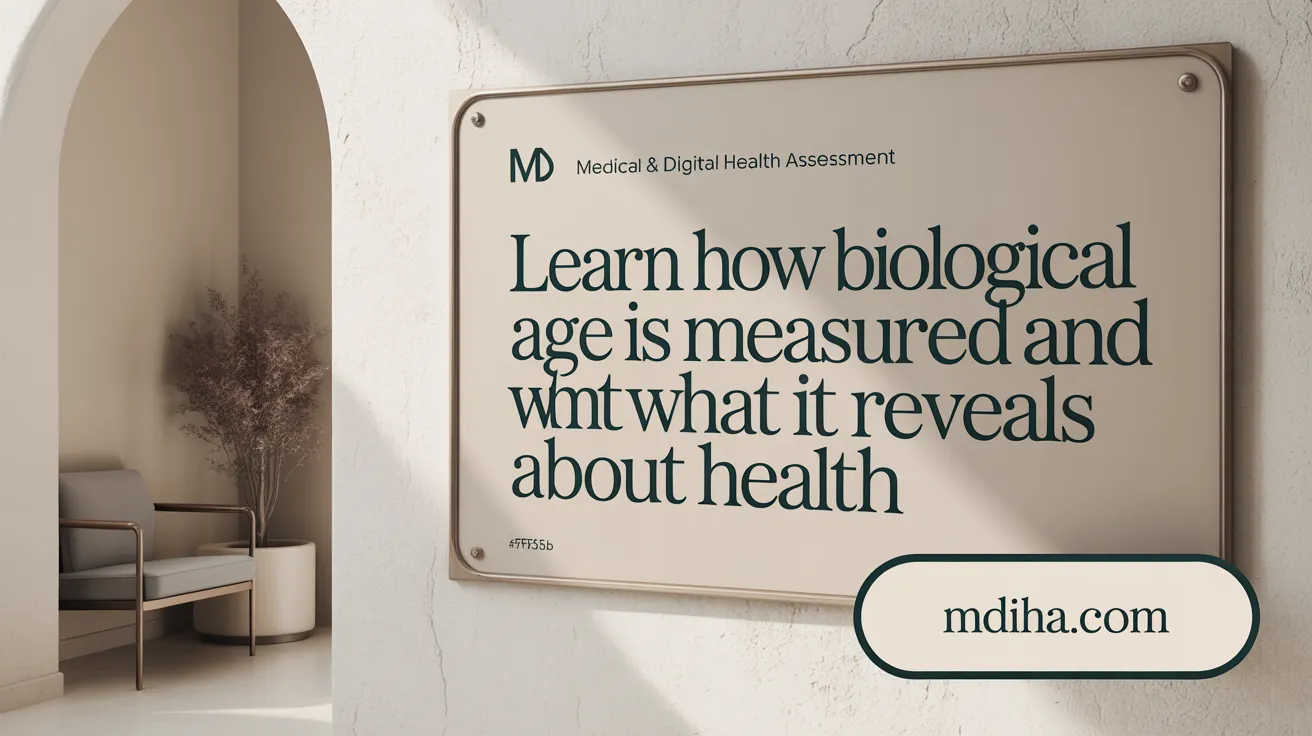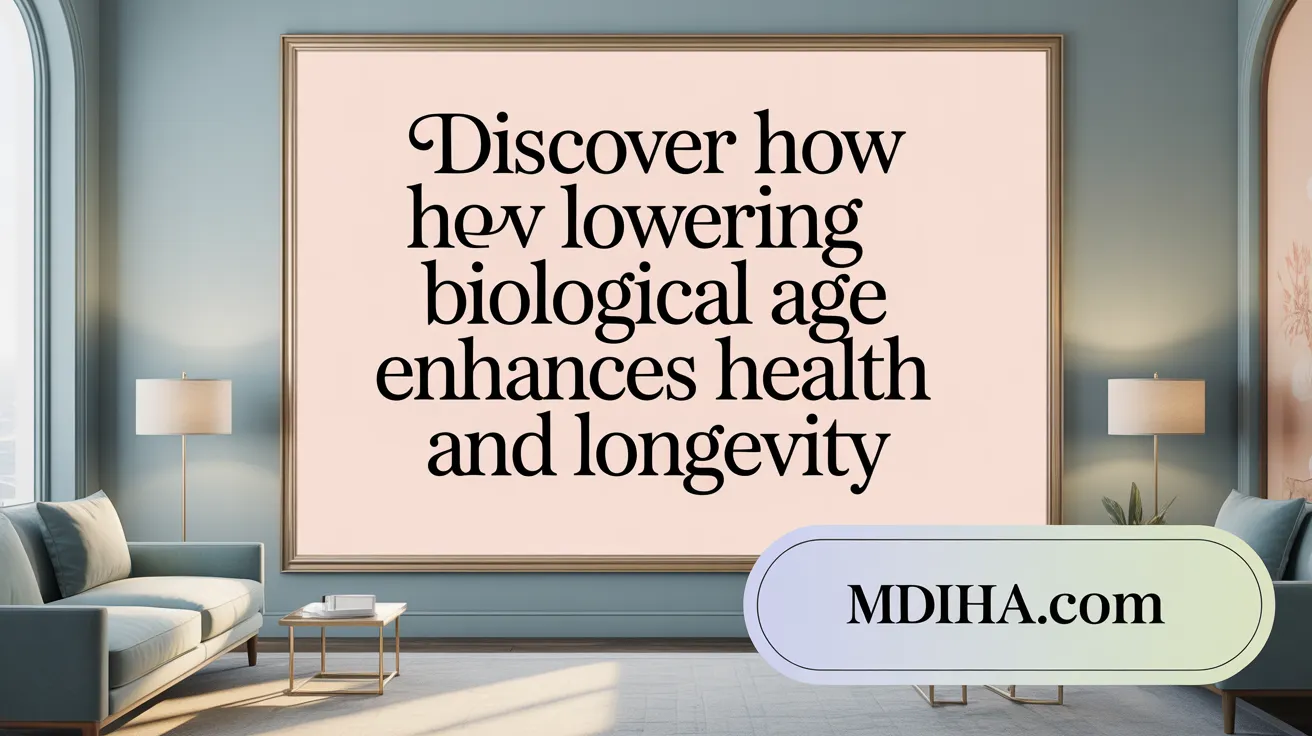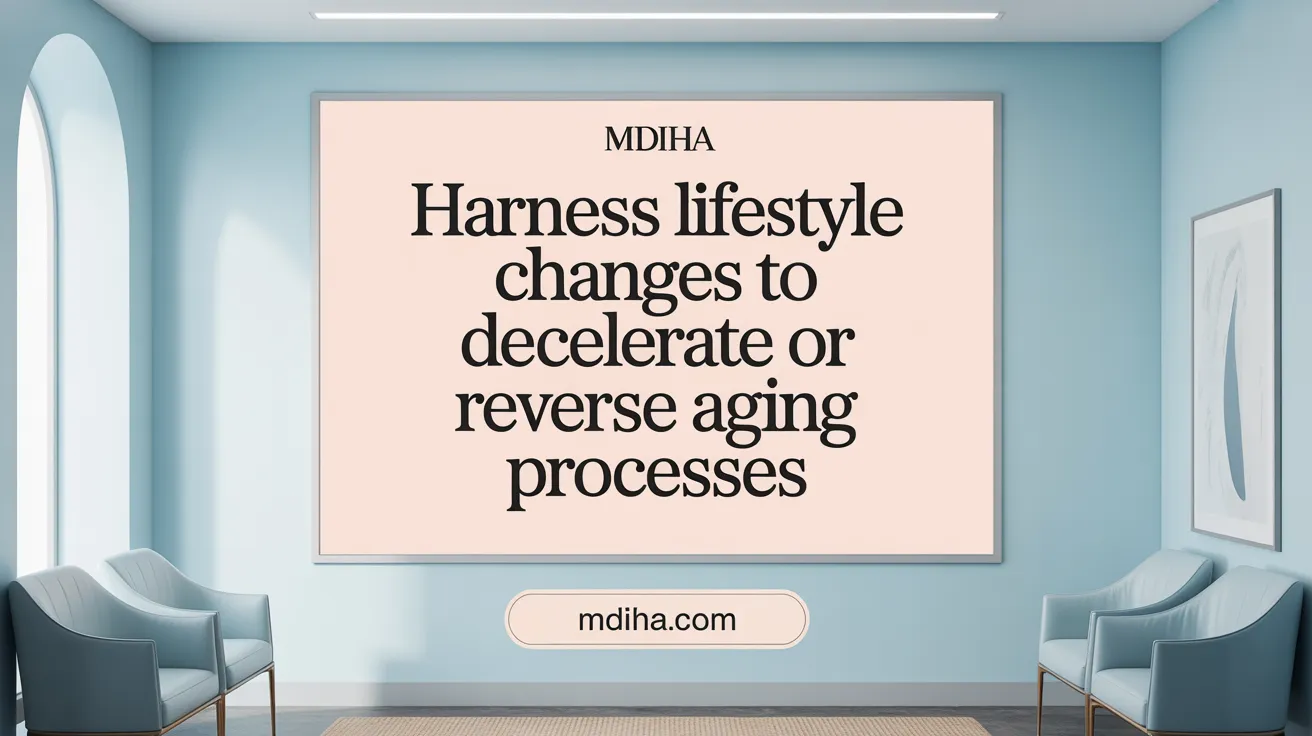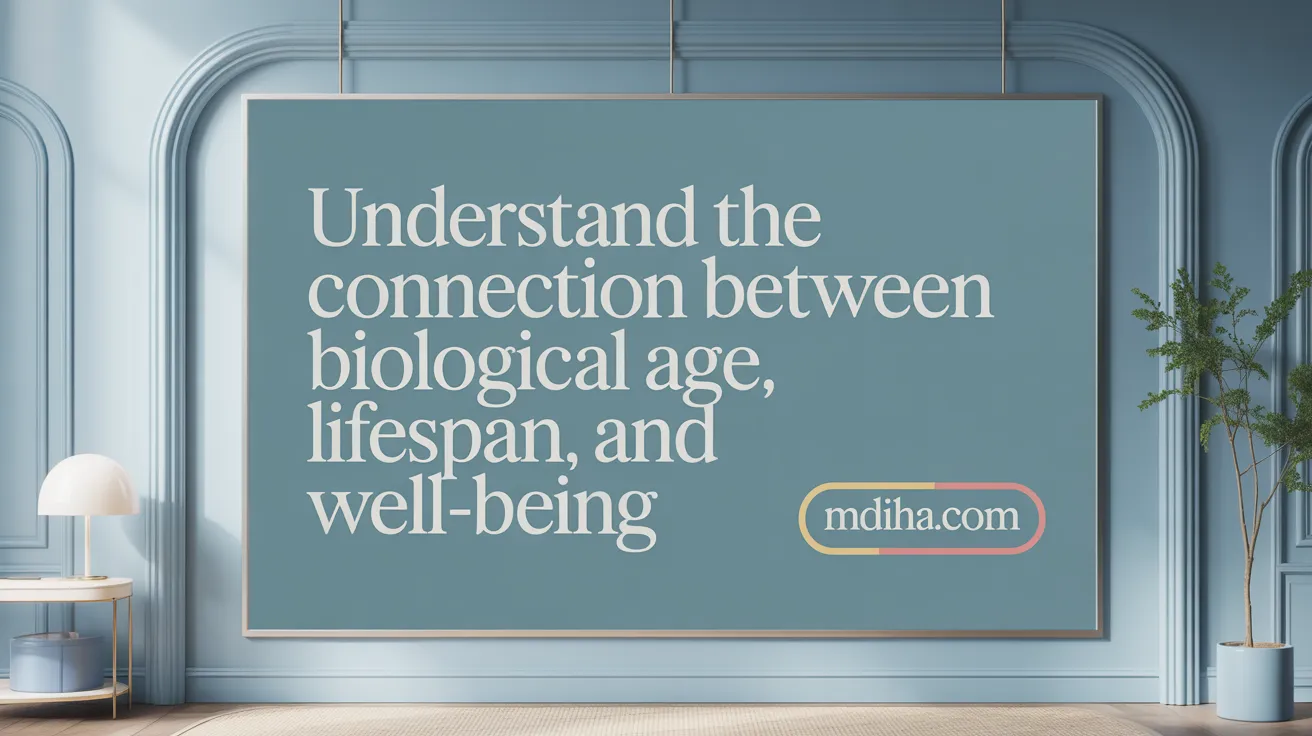Why Biological Age Matters Beyond the Calendar
Biological age offers a dynamic window into our true health, far surpassing the simple measure of time since birth. Unlike chronological age, which merely counts years lived, biological age reflects the wear and tear at the cellular and molecular levels that determine how well our body functions. Understanding biological age and learning how to reduce it can transform how we approach health, disease prevention, and longevity. This article explores the science behind biological aging, its impact on healthspan and quality of life, and how lifestyle and social factors can slow or even reverse this process, offering compelling benefits beyond just the numbers on a birth certificate.
Understanding Biological Age: The Science Behind the Measure

What is biological age, and how is it scientifically measured?
Biological age reflects how well or poorly your body is functioning relative to your chronological age, serving as an indicator of health, vitality, and the risk of age-related diseases. Unlike calendar age, biological age can vary significantly among individuals of the same chronological age, providing a more personalized understanding of aging.
Scientists utilize various advanced methods to measure biological age, focusing on molecular, cellular, and physiological markers. Key techniques include analyzing DNA methylation patterns—epigenetic marks that influence gene expression—and assessing telomere length, which shortens as cells age. Cellular markers indicating senescence or mitochondrial function are also important.
To enhance accuracy, researchers combine multiple biomarkers into comprehensive models. These models often employ machine learning algorithms, such as Cox proportional hazards models with regularization, principal component analysis (PCA), or deep neural networks, to interpret complex biological data. Blood-based tests are most common, measuring molecules, proteins, and other markers associated with aging processes.
One notable tool is the DunedinPACE algorithm, which uses DNA methylation data to estimate the rate of biological aging and predict health risks and mortality. Other approaches include multi-biomarker panels and organ-specific aging clocks, which analyze biomarkers specific to organs like the brain or lungs, providing detailed insights into organ health.
While no single biomarker offers a complete picture, integrating multiple molecular and physiological indicators helps create a reliable estimate of biological age. This comprehensive approach allows for early detection of accelerated aging and opens avenues for targeted interventions to enhance healthspan.
Reducing Biological Age: Unlocking Health Benefits and Extending Healthspan

How can reducing biological age benefit overall health and extend health span?
Lowering biological age offers significant advantages for health and longevity. Scientific research indicates that people with a younger biological age tend to have better organ function, stronger immune systems, and lower risks of age-related diseases such as cancer, cardiovascular diseases, and neurodegeneration.
A younger biological age also correlates with improved physical vitality, more resilience against illness, and enhanced quality of life. Interventions like calorie restriction, which involves reducing caloric intake without malnutrition, have been shown to slow cellular aging processes like DNA damage accumulation and gene expression changes related to aging.
Nutritional strategies such as consuming a plant-based diet rich in fruits, vegetables, and healthy fats, and that mimic fasting effects, help reduce systemic inflammation and oxidative stress—both drivers of aging. Supplements targeting gene activity, such as the Cel System, aim to enhance muscle strength, reduce body fat, and promote better organ health.
By addressing the molecular and cellular mechanisms of aging, these measures can extend the period of life spent in good health, known as health span. Ultimately, reducing biological age not only adds years to life but also adds life to years, ensuring longer periods of independence, vitality, and decreased healthcare burdens.
Lifestyle Modifications as Powerful Tools to Slow or Reverse Aging

What lifestyle modifications have been shown to slow down or reverse biological aging?
Research consistently demonstrates that certain lifestyle choices can significantly impact the aging process at a molecular level. Regular physical activity, such as resistance training and aerobic exercises, is linked to slower epigenetic aging and longer telomeres, which are markers of cellular health. Maintaining a balanced diet rich in fruits, vegetables, whole grains, and healthy fats — particularly following a Mediterranean or plant-based diet — has been associated with decelerated biological aging based on various biomarkers.
Avoiding harmful habits such as smoking and excessive alcohol consumption is crucial, as these behaviors are strongly linked to accelerated aging and higher risks of chronic diseases. Smoking contributes to cellular damage, while alcohol's impact varies but moderation is advised to maintain youthful biological markers.
Beyond diet and exercise, other lifestyle factors play a role. Good sleep hygiene helps repair and rejuvenate cells, while managing stress through mindfulness or relaxation techniques can reduce inflammation and preserve epigenetic stability.
Socioeconomic factors, including education, income, and social support, also influence aging. People with higher social advantage tend to experience slower biological aging, possibly through reduced stress and better access to health resources.
Collectively, embracing these healthy behaviors can substantially delay biological aging processes. The evidence supports that adopting multiple positive lifestyle habits can not only extend lifespan but also enhance healthspan—our years of life spent in good health.
For instance, studies on populations following the Blue Zones model, which emphasizes diet, physical activity, and social connectivity, show dramatic benefits in slowing aging. Similar research indicates that moderate lifestyle modifications can influence biomarkers like DNA methylation patterns, telomere length, and inflammatory markers, all of which are associated with aging rates.
In summary, consistent healthful habits—regular activity, nutritious diet, absence of smoking, moderate alcohol intake, sufficient sleep, stress management, and strong social ties—are powerful tools in reducing biological age. These interventions, especially when combined, hold promise for delaying the onset of age-related decline and improving overall quality of life.
Cutting-Edge Scientific Advances in Aging Research
 Scientists have made significant progress in understanding and targeting the aging process. A major development is the improvement of epigenetic clocks, which analyze DNA methylation patterns to provide accurate estimates of biological age. These clocks can now detect subtle differences in aging rates and are being supplemented by organ-specific aging clocks, allowing researchers to measure the age of individual organs like the brain or lungs.
Scientists have made significant progress in understanding and targeting the aging process. A major development is the improvement of epigenetic clocks, which analyze DNA methylation patterns to provide accurate estimates of biological age. These clocks can now detect subtle differences in aging rates and are being supplemented by organ-specific aging clocks, allowing researchers to measure the age of individual organs like the brain or lungs.
One exciting frontier involves the identification of proteins from young blood, such as TIMP2, which have shown promise in animal studies to reverse some aspects of brain aging and neurodegeneration. These blood-based therapies aim to restore tissue function and improve overall health.
In addition, the field of pharmacological intervention is advancing with drugs like rapamycin and its derivatives, which have demonstrated the ability to extend lifespan and delay age-related diseases in animals. Researchers are also exploring senolytic drugs, such as dasatinib and quercetin, that selectively eliminate senescent cells—damaged cells that secrete pro-inflammatory molecules contributing to aging and tissue dysfunction. Studies led by experts like Dr. James Kirkland have highlighted the potential for these therapies to enhance healthspan.
Diet and lifestyle interventions are complemented by the development of caloric restriction mimetics and fasting-mimicking diets developed by Valter Longo. These approaches aim to simulate the beneficial effects of calorie restriction without requiring severe caloric reduction, promoting cellular health and longevity.
An integrative approach is emerging that combines advances in genetics, pharmacology, and lifestyle modifications. Personalized aging profiles, using tools like Ageome, analyze multiple biological pathways to target specific aging processes. This multidisciplinary research aims to delay or even reverse aspects of biological aging, ultimately reducing disease risk and extending healthy lifespan.
Biological Age, Longevity, and Quality of Life: The Crucial Link

How does biological age correlate with longevity and quality of life?
Biological age serves as an important indicator of an individual's overall health and lifespan potential. Unlike chronological age, which counts the years since birth, biological age reflects the real condition of body tissues and organs, influenced by genetics, lifestyle, environment, and health behaviors.
Research consistently shows that people with a lower biological age tend to live longer and healthier lives. For example, advanced measures such as phenotypic age and DNA methylation-based clocks can predict mortality risks with greater accuracy than chronological age alone.
Specifically, these biomarkers can reveal how quickly one's body is aging, potentially hundreds of thousands of days ahead of clinical symptoms or disabilities. Accelerated biological aging is linked with higher incidence of diseases like cardiovascular conditions, neurodegeneration, and cancer, which reduce both lifespan and quality of life.
Technological advances, including artificial intelligence and comprehensive biomarker panels, have enhanced our ability to estimate biological age precisely. This enables early detection of aging-related decline, providing opportunities for intervention to delay or reverse aging processes.
Lifestyle choices play a crucial role; consistent evidence shows that habits such as healthy diet, regular physical activity, good sleep, social engagement, and avoiding harmful behaviors can significantly slow biological aging.
In summary, maintaining a younger biological age correlates with increased longevity and better day-to-day health outcomes, underscoring the importance of modifiable factors in aging healthily and extending quality life.
| Aspect | Impact on Longevity & Quality of Life | How It Is Measured | Additional Details |
|---|---|---|---|
| Biological age | Directly correlates; lower better | DNA methylation, phenotypic markers | Predicts risk of age-related diseases, mortality |
| Organ-specific aging | Can identify vulnerable tissues | Organ-specific clocks | Focused interventions to delay organ decline |
| Lifestyle factors | Significantly influence aging speed | Lifestyle questionnaires | Diet, exercise, sleep, social support impact |
| Chronic inflammation | Accelerates aging, reduces health span | Inflammatory biomarkers | IL-6 and other cytokines indicate systemic inflammation |
| Biomarker panels | Enhance aging prediction | Blood, saliva, urine tests | Includes metabolites, telomere length, others |
Understanding and monitoring biological age offers an effective route to improve lifespan and the quality of aging, making it an essential focus in contemporary health management.
The Power of Social Connections in Modulating Biological Aging

What role do social connections and relationships play in biological aging and health outcomes?
Social relationships have a profound impact on how we age at the biological level. A lifetime of supportive social ties—whether with family, friends, community groups, or religious organizations—can slow down the aging process as measured by molecular markers like DNA methylation.
Research shows that individuals with strong social support tend to have epigenetic patterns indicating a younger biological age compared to their chronological age. These patterns are linked with healthier cellular function and reduced risk of chronic diseases.
Besides direct effects on DNA, social advantage helps decrease systemic inflammation, a key driver of many age-related conditions. For instance, levels of interleukin-6, a molecule involved in inflammation, are lower in socially supported individuals, reducing the risk of diseases such as heart disease and neurodegeneration.
Chronic social stressors—like social discrimination, loneliness, or social adversity—trigger stress responses that increase inflammation and accelerate cellular aging. Conversely, social support acts as a buffer, calming neuroendocrine responses, lowering inflammation, and fostering resilience.
Sustained, long-term social connections build up over decades and influence core biological systems, such as epigenetic regulation and immune function. These relationships promote healthier aging by slowing epigenetic aging clocks and reducing inflammation. Multiple studies, including data from the MIDUS research, support that social integration is associated with lower levels of pro-inflammatory markers and a biological age that is often younger than expected.
Overall, social relationships are not only vital for emotional well-being but also for regulating physical health at the molecular level. Developing and maintaining supportive social networks can be a powerful strategy to delay age-related decline and improve healthspan.
Holistic Approaches to Measuring and Managing Biological Age
Diversity of biological age tests and markers
Scientists use various methods to assess biological age, focusing on molecular and cellular changes in the body. Epigenetic clocks, such as DNA methylation patterns, are among the most promising because they provide a snapshot of cellular aging. Other markers include telomere length, which shortens with age, and metabolite levels that reflect metabolic health. These tests help estimate how quickly someone is aging and predict risks for age-related diseases.
Physical assessments and self-evaluation methods
Simple physical tests can give rough estimates of biological age. Measures like walking speed, balance, and appearance can indicate aging levels. For example, a decline in muscle strength or balance suggests advanced biological age and higher fall risk. Self-assessment tools and lifestyle questionnaires also aid in understanding aging progress, enabling early intervention for healthier aging.
Importance of musculoskeletal health for aging
Maintaining strong bones and muscles is crucial for mobility and independence in later years. Age-related decline in bone density and muscle mass can lead to frailty and falls. Programs like OsteoStrong employ osteogenic loading to increase bone density and muscle strength with quick, low-impact sessions. Consistent physical activity supports musculoskeletal health and delays age-related deterioration.
Emerging interventions like OsteoStrong
Innovative therapies are developing to counteract physical aging. OsteoStrong sessions require just one weekly visit and have shown to boost bone strength and balance. Such interventions aim to prevent osteoporosis and improve overall functional ability, helping older adults stay active and independent longer.
Monitoring organ-specific aging and global biological age
Advances enable us to measure how individual organs age differently. Organs like the brain and lungs have their own biological clocks. For instance, an older brain may signal higher Alzheimer's risk, while aged lungs increase COPD susceptibility. By comparing organ-specific age gaps, healthcare can become more personalized, targeting specific vulnerabilities.
Future potential of integrated aging assessments
Looking ahead, comprehensive tools like 'Ageome' combine multiple biological pathways to give a detailed aging profile. These integrated assessments can reveal tailored intervention strategies, slow down specific aging processes, and extend healthspan. As technology advances, the goal is to refine these methods for earlier detection and more effective management of aging.
Beyond the Number: Embracing a New Paradigm for Aging
Reducing biological age is far more than just slowing the clock; it is about enhancing vitality, preventing disease, and ultimately extending the years of healthy and fulfilling life. Together, scientific breakthroughs and lifestyle interventions offer a powerful toolkit to measure, understand, and influence the deep biological mechanisms driving aging. Embracing holistic approaches—from diet and exercise to social connections and emerging therapies—empowers individuals to take control of their healthspan in meaningful ways. As research progresses, the promise of personalized strategies targeting biological aging grows brighter, transforming aging from an inevitable decline to an opportunity for sustained wellness and longevity.
References
- Can we slow aging? | National Institutes of Health (NIH)
- Age is more than just a number
- Are you a rapid ager? Biological age is a better health ...
- Understanding Biological Age: Beyond Just a Number
- Strong Social Bonds May Literally Slow Aging at the ...
- Redefining Age: Why Biological Age Matters More Than ...
- 9 simple, science-backed changes that can reverse your ...
